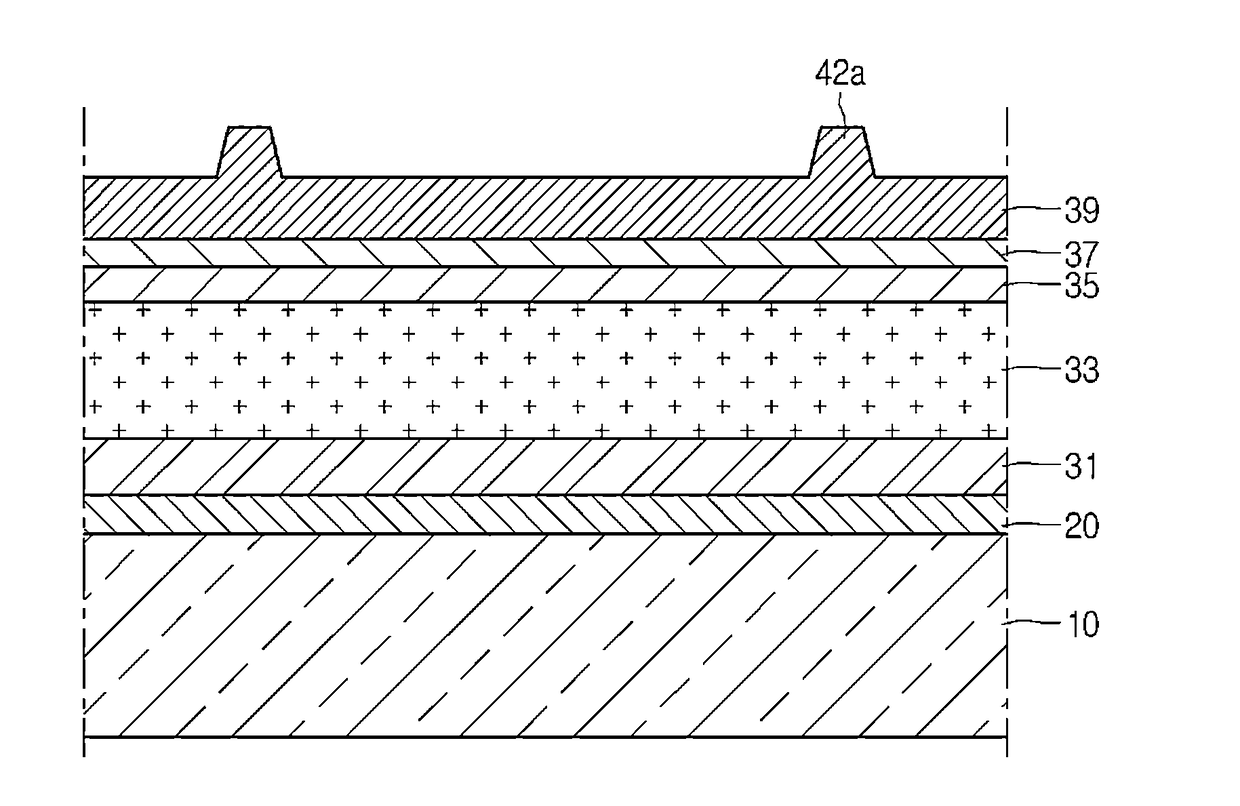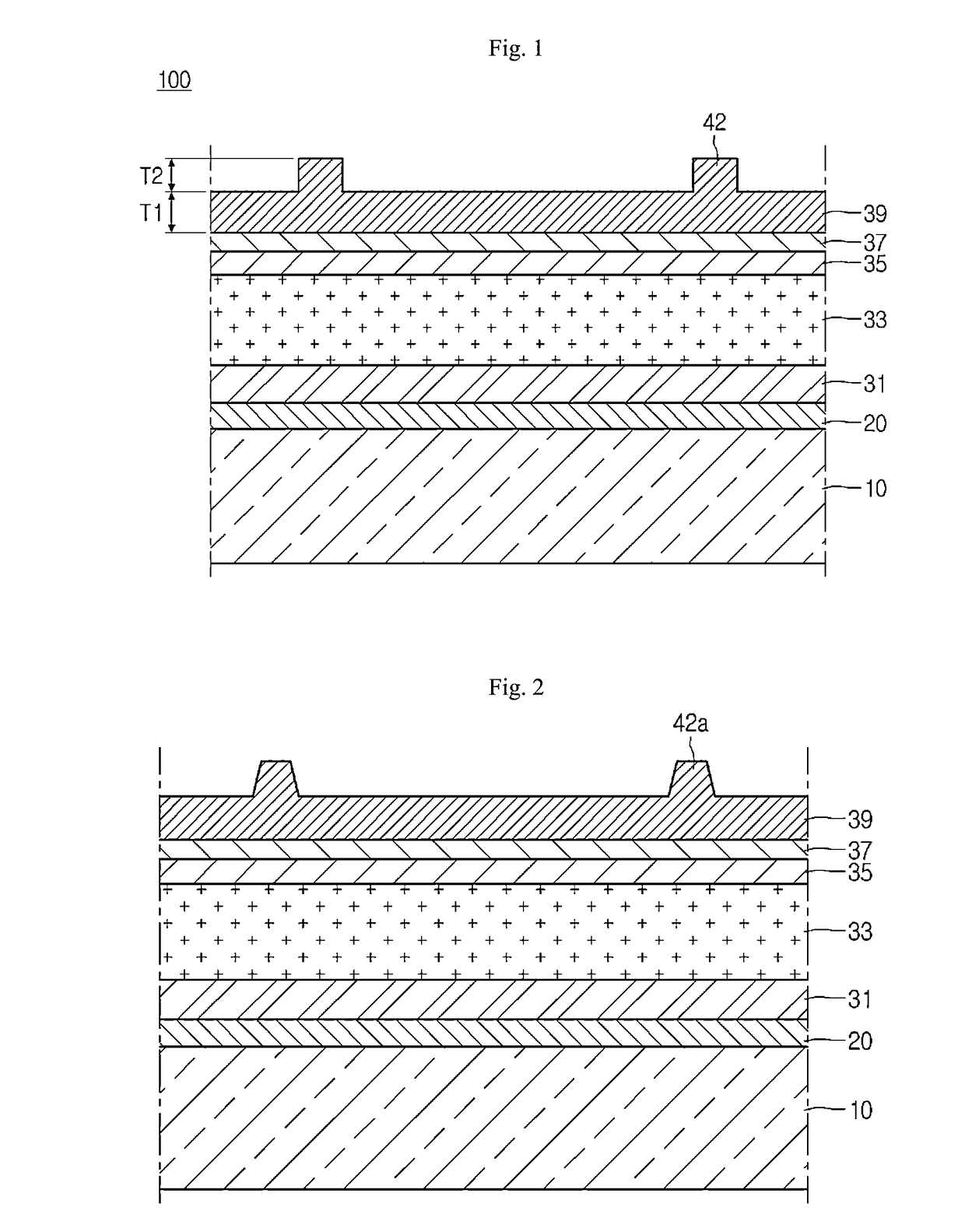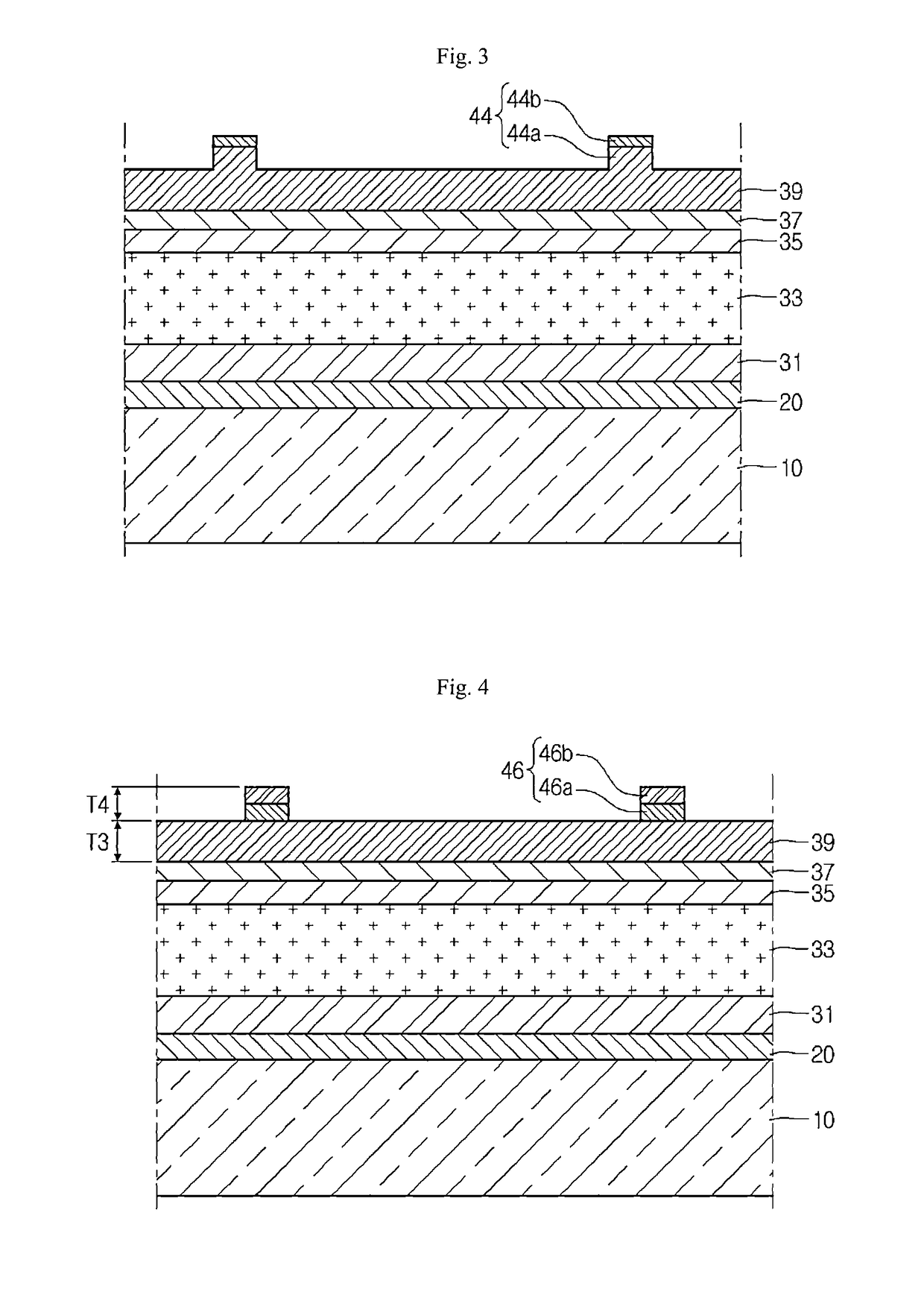Solar cell
a solar cell and solar cell technology, applied in the field of solar cells, can solve the problems of reducing achieve the effect of improving the effective area of the solar cell, and improving the photoelectric conversion efficiency of the solar cell
- Summary
- Abstract
- Description
- Claims
- Application Information
AI Technical Summary
Benefits of technology
Problems solved by technology
Method used
Image
Examples
first embodiment
[0021]FIG. 1 is a schematic sectional view showing a solar cell according to the
[0022]Referring to FIG. 1, the solar cell 100 according to the embodiment includes a substrate 10 on which a first electrode 31, a light absorbing layer 33, a second electrode layer 39 and a grid electrode 42 are sequentially formed. In addition, the solar cell 100 may further include a barrier layer 20, a buffer layer 35 and a high-resistance buffer layer 37. The structure of the solar cell 100 will be described below in more detail.
[0023]The substrate 10 has a plate shape and supports the first electrode layer 31, the light absorbing layer 33 and the second electrode layer 39 formed thereon. The substrate 10 may include an insulator, such as glass or plastic. For instance, the substrate 10 may include soda lime glass. However, the embodiment is not limited thereto. For instance, the substrate 10 may include a metallic substrate. That is, the substrate 10 may be formed by using a rigid material or a fle...
second embodiment
[0050]FIG. 3 is a schematic sectional view showing a solar cell according to the
[0051]Referring to FIG. 3, the grid electrode 44 according to the second embodiment includes a first layer 44a formed by using a material the same as that of the second electrode layer 39, and a second layer 44b formed by using a material having resistance lower than that of the first layer 44a.
[0052]For instance, the first layer 44a may be formed by using a transparent conductive material, such as aluminum-doped zinc oxide (AZO), fluorine-doped tin oxide (FTO), gallium-doped zinc oxide (GZO), or boron-doped zinc oxide (BZO). In addition, the second layer 44b may be formed by using a metal, such as Ni, Ag, Pt, Au or an alloy thereof. The second layer 44b has a thin thickness to allow light to pass therethrough. That is, the second layer 44b may have light transmittance although the second layer 44b is formed by the metal.
[0053]As described above, since the grid electrode 44 has the first layer 44a inclu...
third embodiment
[0056]FIG. 4 is a schematic sectional view showing a solar cell according to the
[0057]Referring to FIG. 4, a grid electrode 46 according to the third embodiment can be formed by sequentially laminating first and second metal layers 46a and 46b, which are different from each other, on the second electrode layer 39.
[0058]For instance, the first metal layer 46a may include Ni, Ag, Pt or an alloy thereof and the second metal layer 46b may include Au. The first and second metal layers 46a and 46b have a thin thickness to allow light to pass therethrough, so the grid electrode may have the light transmittance and conductivity.
[0059]According to the third embodiment, the grid electrode 46 is formed by using the metal, so that the resistance can be more reduced. Thus, the photoelectric conversion efficiency of the solar cell can be more improved.
[0060]When taking the resistance and transmittance of the grid electrode 46 into consideration, a ratio (T4 / T3) of a thickness T4 of the grid elect...
PUM
 Login to View More
Login to View More Abstract
Description
Claims
Application Information
 Login to View More
Login to View More - R&D
- Intellectual Property
- Life Sciences
- Materials
- Tech Scout
- Unparalleled Data Quality
- Higher Quality Content
- 60% Fewer Hallucinations
Browse by: Latest US Patents, China's latest patents, Technical Efficacy Thesaurus, Application Domain, Technology Topic, Popular Technical Reports.
© 2025 PatSnap. All rights reserved.Legal|Privacy policy|Modern Slavery Act Transparency Statement|Sitemap|About US| Contact US: help@patsnap.com



